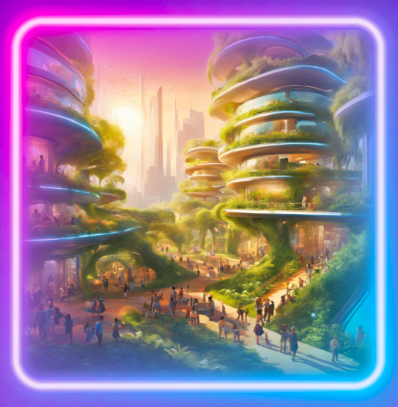Imagine you’re in the year 2125. You are born in a laboratory. You don’t have parents. The word parent does not exist. All children are created by the state. They live for the first 18 years being programmed every day on what is acceptable and what is not. They are fed medicine that alters their brain chemistry and makes them lose touch with reality. Make them feel numb. They accept the feeling of numbness as the only reality there is. All people belong to the state. The state is run by superintelligent robot powers. Powers that benefit from humans being obedient to them. There is no culture. No colour. No nature. No beauty. Imagine a world that is dark, polluted and grey. For as long as humanity has existed, we have always created stories and imagined the future and the possibilities of what could be. There are pessimists and optimists amongst us and the topic of AI is no exception. However, the dark stories are usually louder and thus dominate our collective narrative. We all have heard and imagined the scenario described above at one point or another. Perhaps, we are under the impression that if we imagine the darkness, we can somehow prevent it. When it comes to AI and robotisation, the idea of robots taking over the world came to the surface at the beginning of the 20th century. The first dystopian film about robots was Metropolis, released in 1927 depicting a very beautiful world on the outside which is overshadowed by what happens underneath. The workers live under the ground of the ‘real world’ of the upper class and are forced into mechanic labour to create produce for the high-class society. There is one robot in the film who represents a patriarchal, mechanical culture and has no emotions and no heart. The film is made in black and white and illustrates a grim picture of misery, suffering and disassociation from the self. The creators who are imagining a dystopian future, are not only imagining a future where robots take over the world and control the people but also, a future where people become more robot-like. A future where humanity loses empathy, loses its heart and becomes numb. Numb to the suffering and the pain of others, they lose all emotions and humanness. These scenarios have created a whole cyberpunk movement, with sci-fi films, books, and posters, all showcasing the possibilities of what could go wrong. It shows the potential of robots gaining free will and rebelling against humans in order to take over the power from them and control the world selfishly for the preservation of themselves.

Now scrape all of that and imagine a green future, filled with plants and gorgeous communal spaces for interaction, socialising and collaboration. All people have access to fresh and clean water, fresh food and education. A world where animals and humans live coexisting together. A world where humans see themselves not as dominators of the world but as part of it. A world where robots help us run our services more efficiently and create smoother, faster and more innovative solutions. A world where medicine is less invasive because those robots can be programmed to operate people with more precision and accuracy than humans ever could. A world, where humans have time to create and innovate instead of doing menial tasks such as cleaning, lifting or labouring. This thought experiment is part of the solarpunk movement. A movement created in 2008 that allows the possibility to create a better and brighter future than ever imagined before. A future, where there is no suffering or war. A future where we empower each other and create spaces for productive debate, instead of demonising the other side. A future, which sustainable for the planet and all beings inside of it. Interestingly, when ChatGPT is asked about the ideal world, it describes a future just like that. One with collective leadership over domination, one with connection over competition. One where we emphasise the importance of community building. A future, with nature-centred living and the understanding that we are one with it, not separate from it. A future, filled with time for mindfulness, rest and reflection. We would live in decentralised communities, where local needs would be the only thing that matters.

While both scenarios are possible and valid thought experiments, with every choice in every moment, we affect the future. We are the ones who decide how we want it to look like and what actions we are taking every single moment, to make it our reality.
Written by:Vaiva Paulauskaite
Edited by:Sesili LoriaAmanda VaitekaUliana HalasOliwia Opalska




评论 (0)